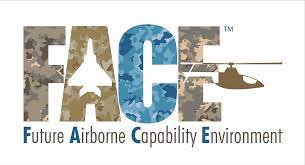The Open Group Future Airborne Capability Environment™ (FACE) Consortium Releases Conformance Contributions to Airworthiness
The Open Group Future Airborne Capability Environment™ (FACE) Consortium has released a new Conformance Contributions to Airworthiness guide, detailing how artifacts and activities for FACE Conformance contribute to flight certification evidence.
The guide is aimed at suppliers developing FACE conformant software in parallel or before developing verification evidence for flight certification. Conformance to the FACE Technical Standard produces artifacts that can be leveraged as developers and integrators move towards flight certification (qualification for airworthiness). The guide targets two representative standards for airworthiness – the international civilian standard DO-178C/ED12C and the U.S. military standard MIL-HDBK-516C.
Programs of record under the Department of Defense (DoD) increasingly require FACE-conformant software components due to the benefits of modularity, portability, and ease of integration. The new guidance can reduce the cost and effort of achieving FACE Conformance and flight certification. Specifically, it aims to cross-reference activities and artifacts for FACE Conformance that can contribute to airworthiness evidence required for flight certification.
“The release of the Conformance Contributions to Airworthiness is an important milestone in our ongoing journey to refine business processes and technical practices that promote integration and delivery of improved capabilities. It provides an important tool for those needing to leverage airworthiness and FACE conformance requirements. We are proud that our comprehensive conformance program continues to grow and positively impact the industry and our national and international membership,” commented Alicia Taylor, The Open Group FACE Consortium Director.
The guide brings key benefits for system integrators planning to incorporate FACE Units of Conformance (UoCs) as well as to developers and suppliers of the UoCs, as an aid for the planning and development of their software. They can expect a reduction in effort and schedule by leveraging data produced to achieve FACE Conformance and also to be used to support flight certification, ultimately reducing the acquisition costs of airworthy systems that incorporate FACE UoCs.
Software components certified as FACE conformant must be reused, leading to recurring savings. Additionally, the artifacts can be revised to support software product lines and have reuse benefits when extended into other product lines, such as document templates.

